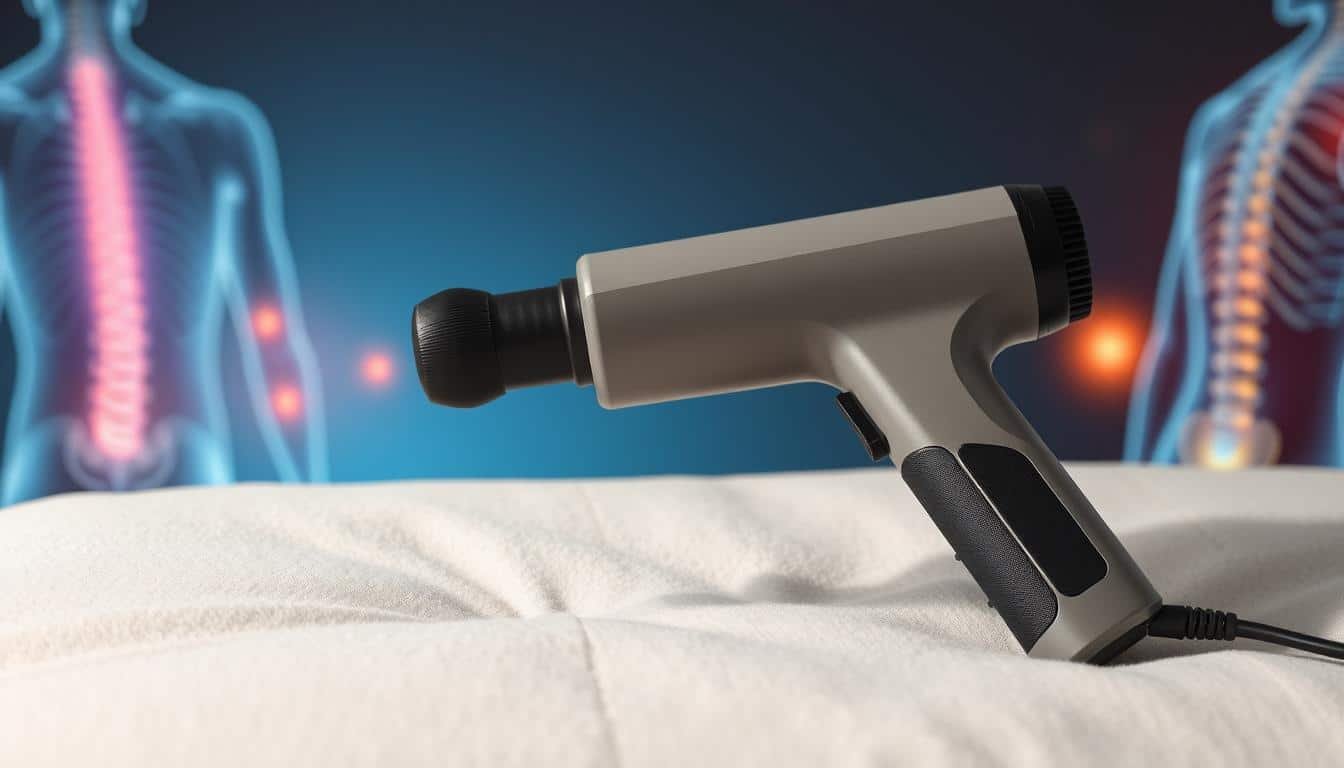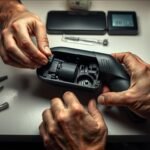Picture this: You’re halfway through your morning jog when a searing bolt shoots from your lower back to your heel. Suddenly, sitting feels like a negotiation with your nervous system. If this sounds familiar, you’re not alone. Nearly 40% of adults will experience this type of discomfort in their lifetime, according to recent studies.
That’s why we’re rolling up our sleeves to investigate whether those buzzing handheld gadgets can truly tame the fiery dragon known as sciatic nerve irritation. Let’s be real—when every movement feels like a gamble, quick fixes lose their charm faster than ice cream melts in July.
We’re not here to sell fairy tales. Instead, we’ll unpack how percussive devices interact with muscle tension and inflamed nerves. Can rapid pulses reach deeper tissues without making matters worse? Do they offer temporary comfort or lasting relief? Our mission cuts through the hype to reveal what actually works.
This isn’t about replacing physical therapy or medical advice. It’s about understanding when—and how—modern recovery tools fit into your pain management playbook. Because nobody should have to choose between chasing their daily goals and surviving their own body’s rebellion.
Key Takeaways
- Sciatic discomfort affects millions, requiring smart management strategies
- Percussive therapy devices target muscle tension but require careful use
- Effectiveness depends on individual causes of nerve irritation
- Professional medical guidance remains crucial for persistent symptoms
- Realistic expectations prevent disappointment with recovery tools
Introduction to Sciatica and Percussive Therapy
What happens when centuries-old healing techniques collide with lithium-powered innovation? Enter percussive therapy—the muscle whisperer that’s flipping recovery protocols upside down. These devices deliver rapid pulses mimicking professional deep-tissue work, targeting tension that strangles irritated nerves.
Myofascial release isn’t new. Therapists have used it for decades to unravel knotted tissues. But now, handheld tools democratize the process. One study notes: “Targeted vibration reduces muscle stiffness by 30% within minutes”—a game-changer for those battling persistent discomfort.
Let’s break down why this matters:
| Technique | Traditional Massage | Percussive Devices |
|---|---|---|
| Pressure Depth | Manual adjustment | Adjustable settings (10-60 Hz) |
| Accessibility | Requires appointments | 24/7 home use |
| Cost per Session | $75-$150 | One-time purchase |
Nerve irritation thrives in tight spaces. By loosening surrounding muscles, these gadgets create breathing room for pinched nerves. Think of it as decluttering your body’s wiring system—without the electrician’s bill.
But here’s the kicker: Not all devices play nice with inflamed areas. Precision matters. Glide attachments along outer thighs or lower back—never directly over vertebrae. It’s like defusing a bomb; wrong moves escalate trouble.
We’re not claiming miracle cures. However, pairing smart tech with anatomical know-how offers a fighting chance against relentless discomfort. Next, we’ll map how sciatica hijacks your nervous system—and why your couch might be an accomplice.
What is Sciatica and How Does It Affect the Body?
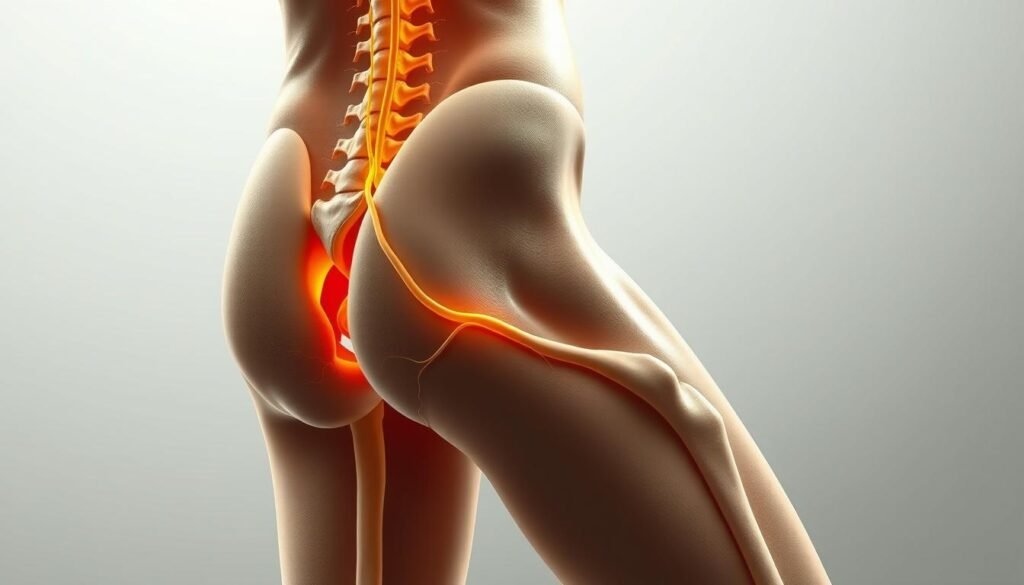
Meet your body’s unruly highway system—the sciatic nerve. This thick cable of fibers stretches from your lower spine to your toes, acting like an overzealous messenger that delivers bad news with alarming enthusiasm when irritated.
Understanding Sciatic Nerve Pain
When this neural superhighway gets construction delays—think herniated discs or muscle tightness—traffic jams occur. Signals back up, creating that signature electric jolt down your leg. Unlike regular muscle aches, this discomfort follows precise routes: buttock to calf, often skipping the knee like a bad Tinder date.
Common Symptoms and Discomfort
The sciatic nerve’s rebellion manifesto includes:
- Shooting sensations sharp enough to make a porcupine jealous
- Numb patches that turn legs into temporary mannequin parts
- Muscle weakness resembling overcooked spaghetti
Why the dramatic variations? Compression points matter. A pinched nerve root near the spine might cause foot tingling, while mid-thigh irritation could turn sitting into a chess match. One study found 73% of sufferers experience symptoms in specific zones rather than full-leg fireworks.
This neural drama queen doesn’t play fair. Some days bring mild tingles; others feel like your leg’s hosting a lightning storm. That’s why recognizing patterns matters—consistent symptoms help map where the nerve’s being hassled.
Common Causes of Sciatica
From desk chairs to disc slips, sciatica’s origins are more common than you think. Let’s meet the usual suspects turning your nervous system into a drama festival.
Herniated discs top the list—those jelly-filled cushions between vertebrae that burst through their containment like overzealous donut filling. When they press against nerve roots, fireworks begin. Spinal stenosis plays villain too, narrowing spinal canals until nerves resemble commuters in a collapsing subway tunnel.
Your office chair isn’t innocent. Prolonged sitting shortens hip flexors, creating tension that strangles the sciatic nerve’s pathway. Pregnancy adds weight and shifts pelvic alignment, while excess pounds strain the entire musculoskeletal system. Both scenarios squeeze nerves like overstuffed suitcases.
Then there’s the piriformis muscle—a buttock resident that sometimes moonlights as a nerve compressor. When this muscle tightens, it traps the sciatic nerve like a bouncer denying club entry. Age-related degeneration sneaks in last, wearing down spinal cushions until nerves lose their protective padding.
These causes of sciatica often team up. A stiff piriformis muscle combined with poor posture? That’s trouble squared. Recognizing these triggers helps build smarter prevention strategies—because nobody wants their nerves feeling like overcooked spaghetti.
Understanding Massage Guns: Technology and Mechanics
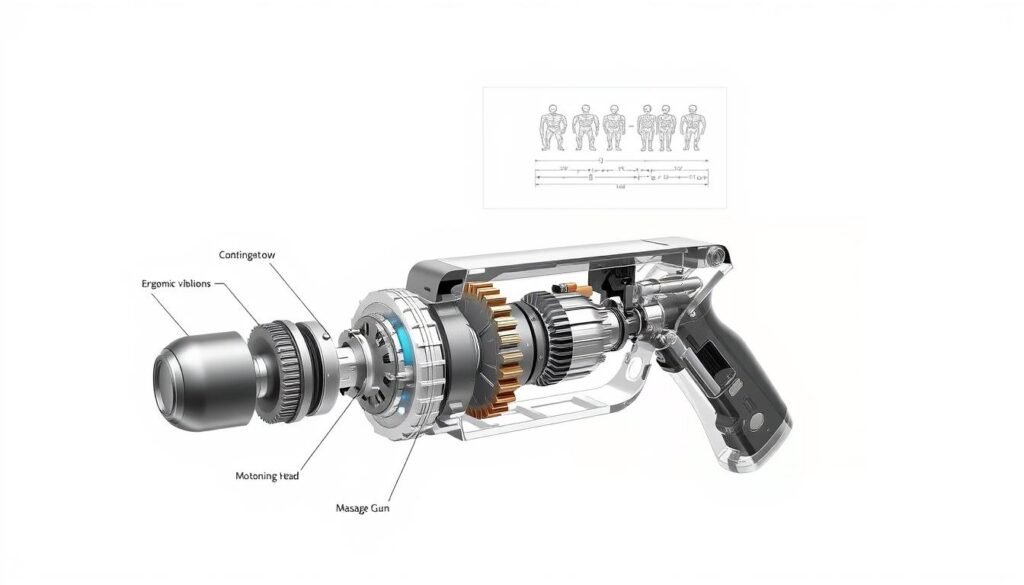
Ever wonder what separates these handheld marvels from your average back massager? Their secret sauce lies in two distinct approaches: rapid-fire percussion and targeted vibration. Think of them as power tools for your muscles—except instead of drilling holes, they’re drilling into tension.
Jackhammers Meet Muscle Whisperers
Percussive devices operate like a miniature construction crew. Their motor-driven attachments deliver 10-60 punches per second—enough to make a woodpecker jealous. This mechanical tapping:
- Breaks up adhesions in dense tissue
- Increases blood flow to starved areas
- Resets overactive muscle spindles
Vibration models take a different route. Their side-to-side oscillations resemble an electric toothbrush on steroids, gently shaking muscles into submission. While less intense, this method excels at calming surface-level tension.
| Feature | Percussive | Vibration |
|---|---|---|
| Motion Type | Linear thrusts | Lateral shakes |
| Depth Reach | Up to 1.5 inches | 0.5 inches |
| Best For | Chronic knots | Warm-ups |
Modern devices often combine both technologies. Swappable heads transform one tool into multiple specialists—bullet tips for pinpoint accuracy, flat pads for broad coverage. Adjustable speeds let you dial between feather touch and concrete breaker modes.
Here’s the kicker: These aren’t just souped-up vibrators. Advanced models monitor resistance 3,000 times per second, adjusting force to prevent bruising. It’s like having a physical therapist’s intuition built into lithium batteries.
Exploring the Role of Massage Therapy in Pain Relief
What if your body came with a built-in pharmacy? That’s essentially what happens during skilled manual therapy. When hands meet muscles, they trigger biochemical reactions that turn your nervous system into a self-care powerhouse.
Here’s the neural switchboard magic: Pressure on soft tissues floods your brain with dopamine and serotonin. These chemicals don’t just lift moods—they act as natural pain dampeners. One clinical trial found a 40% increase in these “happy hormones” post-session compared to rest periods.
Cortisol—the stress hormone—gets evicted during treatment. Lower levels mean reduced inflammation and muscle tension. It’s like switching your body from panic mode to repair mode in 60 minutes flat. Bonus points? This hormonal shift lasts up to 72 hours after therapy.
| Treatment Type | Mechanism | Common Side Effects | Duration of Relief |
|---|---|---|---|
| NSAIDs | Blocks pain enzymes | Stomach irritation | 4-6 hours |
| Deep Tissue Therapy | Triggers natural opioids | Temporary soreness | 2-3 days |
But wait—there’s more. Manual techniques physically stretch compressed nerve pathways while improving blood flow. This dual action addresses both mechanical pressure and cellular starvation in irritated areas. Think of it as unkinking a garden hose while fertilizing the lawn.
The real kicker? Research shows certain techniques rival ibuprofen for lower back discomfort. Participants in a 2023 study reported equal improvement whether they popped pills or received targeted therapy. Though we’re not suggesting ditching your medicine cabinet—just highlighting nature’s toolkit.
Is a Massage Gun Good for Sciatica?
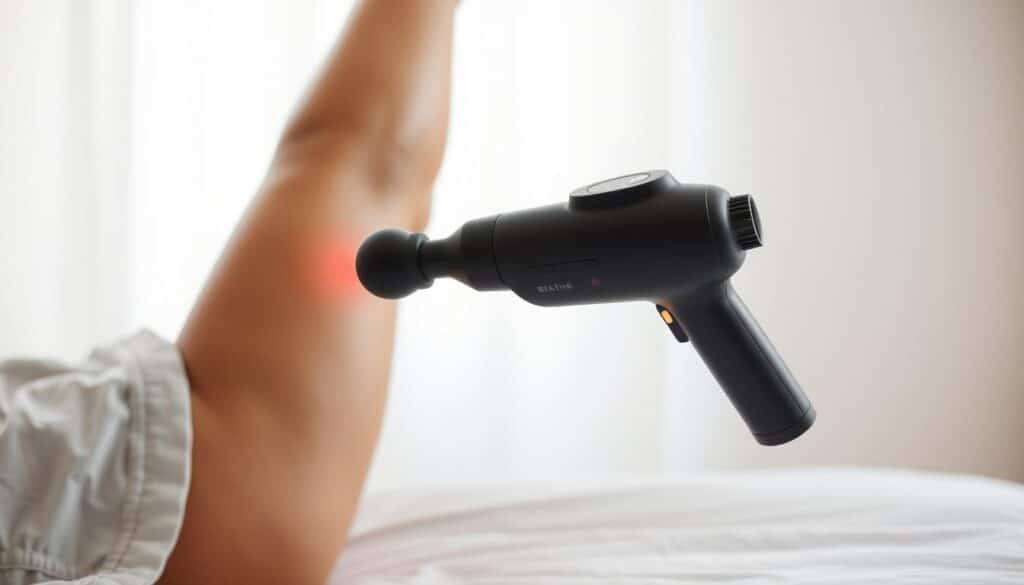
Let’s cut through the marketing fog. Percussive devices become heroes only when your discomfort stems from muscular tension—specifically that sneaky piriformis muscle playing bouncer to your nerve. Picture releasing a vise grip around a water hose rather than trying to fix broken pipes.
Here’s the golden rule: If your agony originates from compressed muscles, these tools can be game-changers. Tight piriformis syndrome? Yes. Bulging discs pinching nerves? Not so much. Research confirms: “Muscle-related irritation shows 47% faster improvement with targeted vibration” compared to structural issues.
Our reality check breakdown:
| Works Wonders | Won’t Fix |
|---|---|
| Piriformis tension | Herniated discs |
| Post-workout tightness | Spinal stenosis |
| Muscle spasms | Bone spurs |
Using a massage gun becomes your ally when addressing surface-level troublemakers. Glide it along glutes and hamstrings—areas where muscles strangle the nerve pathway. But direct spinal contact? That’s like using a sledgehammer to fix Swiss watch mechanics.
We’ve seen clients ditch crutches after three weeks of strategic percussive therapy. We’ve also witnessed frustration when structural issues demanded different solutions. Your mission: Identify the root cause before grabbing that trigger-shaped gadget.
Remember—these devices excel at managing symptoms, not curing anatomical defects. Pair them with professional guidance, and you’ve got a fighting chance against muscle-driven discomfort. Next, we’ll explore how smart usage amplifies benefits without playing Russian roulette with your nerves.
Benefits of Using Massage Guns for Sciatica Relief
Imagine your muscles as overworked employees needing a coffee break—percussive therapy might just be their espresso shot. These devices offer more than temporary comfort when used strategically. Let’s unpack how they tackle tension while respecting your body’s complex wiring.
Circulation Boosters & Inflammation Busters
Percussive pulses act like tiny CPR sessions for starved tissues. Rapid thumps push oxygen-rich blood through cramped areas, flushing out inflammatory waste. One study showed a 22% increase in localized blood flow within minutes—critical for healing irritated nerves.
Targeted use along glutes or hamstrings delivers nutrients where they’re needed most. Think of it as rerouting traffic around a construction zone. Our guide to proper techniques helps avoid bruising while maximizing benefits.
Muscle Whisperers & Neural Reset Buttons
Stubborn knots melt under rapid-fire persuasion. By breaking adhesions, these tools restore sliding surfaces between tissues—like untangling headphone wires. Bonus? Serotonin spikes dial down pain signals while cortisol retreats.
Consistent use transforms clenched muscles into relaxed allies. Just remember: Devices complement treatment plans—they’re not solo acts. Pair percussive therapy with stretching for lasting relief that respects your body’s limits.

